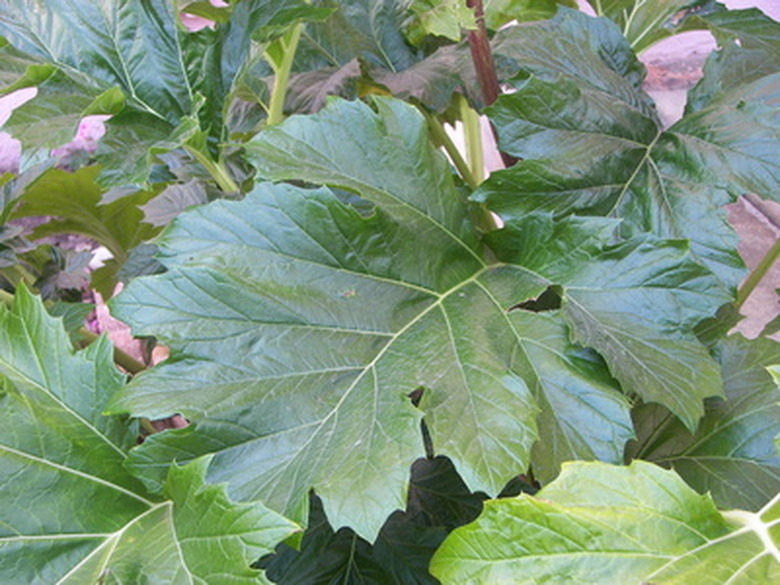Plant Information On Poisonous Elephant Ears
Elephant ear plants (Colocasia esculenta) grow easily from large tuberous bulbs. There are many species of the plant that are popular as both houseplants and outdoor plants in tropical or semitropical regions. Many of the elephant ear varieties are poisonous if consumed by humans, dogs or cats. The plants grow 3 to 5 feet in height with large green, arrow-shaped leaves that resemble the ears of an elephant.
Oxalic Acid
Elephant ears contain varying degrees of oxalic acid. The leaves and stems of the plant contain the highest amount of this toxic chemical. Ingestion of elephant ear can cause severe burning in the mouth, lips and gastrointestinal tract. The mouth, tongue, throat and esophagus will begin to swell, which can cut off the airway of the victim. Vomiting, nausea and diarrhea can occur. Emergency medical treatment should be sought for any human or animal ingesting an elephant ear plant part. While the victim is awaiting medical care wipe the interior of his mouth out with a cool, damp washcloth.
- Elephant ear plants (Colocasia esculenta) grow easily from large tuberous bulbs.
- Many of the elephant ear varieties are poisonous if consumed by humans, dogs or cats.
Growth of the Elephant Ear Plant
Elephant ear plants belong to the Araceae plant family. The tuberous bulb that grows the elephant ear plant is known as a cormel. The plants produce a lateral root system that gives additional strength to support the large heavy leaves and stalks. The cormels of the plant are easy to plant and transplant. The cormels can be set on top of the soil or directly below the soil with a very thin layer of soil across the top. Growth will soon occur.
Indoor/Outdoor Planting
Elephant ear plants can be grown outside in tropical or subtropical regions and they can be successful container plants. When the top growth of the elephant ear first appears, the plant may require staking to offer extra support in a windy region because the root system is often slow to grow enough to anchor the plant. Once the roots are established the large elephant ear does not require staking. Plants grown in a container should be planted in a pot that is at least 2 feet deep to allow ample root growth room. A 30-gallon pot works well for the elephant ear's growth. Elephant ear plants grown outside where winters are cold will need to be dug up from the yard for the winter or moved indoors.
- Elephant ear plants belong to the Araceae plant family.
- When the top growth of the elephant ear first appears, the plant may require staking to offer extra support in a windy region because the root system is often slow to grow enough to anchor the plant.
Water And Soil
Plant elephant ears in areas of dappled shade for best results. They thrive under trees in a mass planting. Soil should be high in humus and well-draining. The plants thrive on moist soil but they do not like waterlogged roots. A few species of elephant ear can be grown successfully in standing water. The alocasia macrorrhiza can be grown in water or in a pond as a water plant. All elephant ear species appreciate being planted beside a pond or other body of water.
- Plant elephant ears in areas of dappled shade for best results.
- A few species of elephant ear can be grown successfully in standing water.
Storing Elephant Ears
Cut the plant stalks back to 2 to 4 inches from the soil line after the first frost hits. The cormels can be gently dug up and allowed to dry for a few days. Place the cormels into peat moss in a cool, dry, dark place such as a basement, cellar or other building. If the cormels are tiny, the plant might not have accumulated enough nutrients to survive the winter and will be unable to grow the following season. Only overwinter large cormels.
